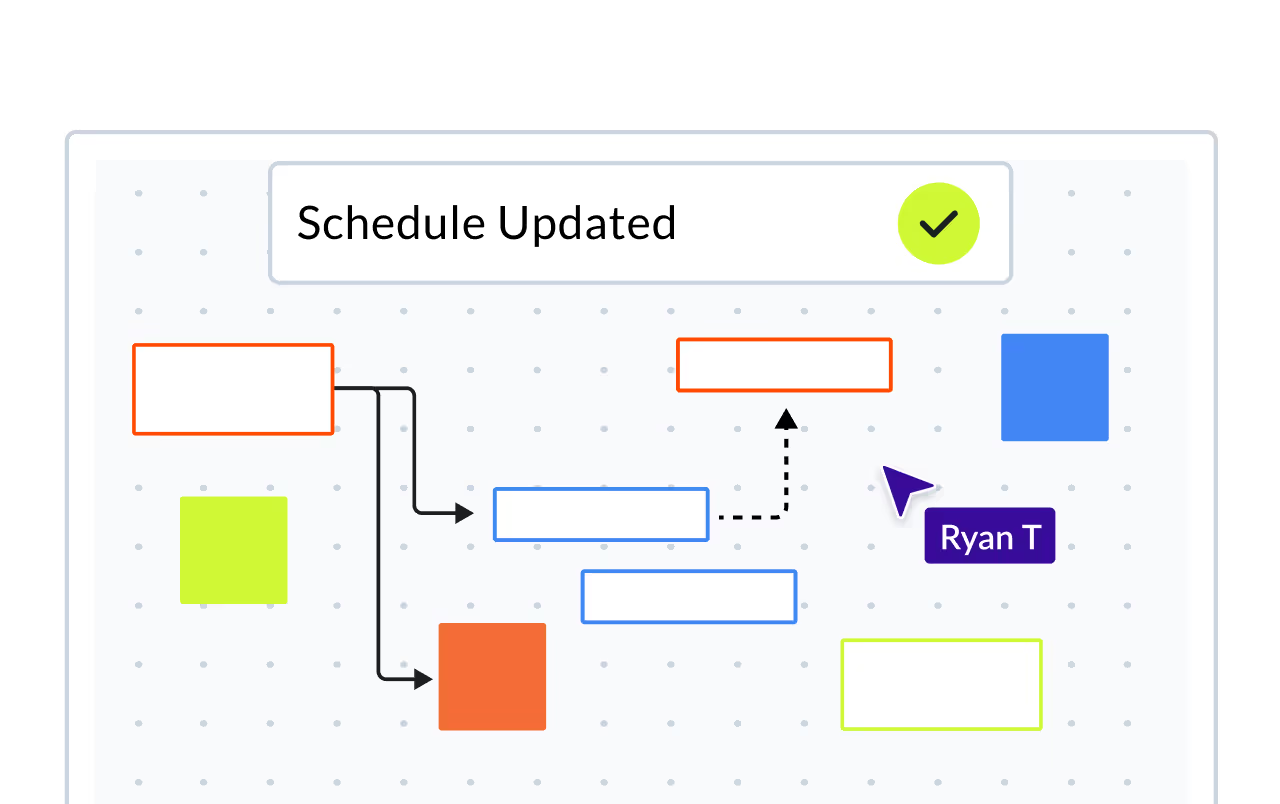
Boosting Efficiency & Precision in Construction Scheduling
Shimmick Construction, a prominent player in civil construction, faced collaboration challenges and limited detail using traditional tools like Excel and P6. This led to low-confidence estimates and inefficient resource loading. The adoption of Planera proved to be a game-changer, slashing scheduling time in half and boosting efficiency by 100%.

Statistic

Statistic

Statistic
“Planera has helped us make our schedules more accurate and efficient.”
About Shimmick Construction
Oakland-based Shimmick Construction is an established leader in the California and Western U.S. heavy civil construction market and one of the country’s foremost builders of public water infrastructures.
Shimmick’s Chief Estimator, Joe Henry, was tasked with creating a pre-bid schedule for a $150 million project that would expand the capacity of a wastewater treatment plant by 50 percent.
Building on an existing structure required a complex schedule that didn’t disrupt plant operations during construction, and accounted for partial or complete shutdowns. The schedule also needed to incorporate intermediate milestones to show progress on the project within specific time frames.
THE CHALLENGE
Issues with Existing Tools
In order to deliver on the client’s needs, the Shimmick team needed to first overcome challenges in its existing scheduling process.
Henry’s team had previously been using Microsoft Excel to create its construction schedules, where different functions or disciplines would create their own schedule sheets and merge them with a master Excel spreadsheet. Then, they would engage the scheduling team (who had limited project knowledge) to create a schedule using tools like Primavera P6.
- This manual process was highly inefficient and didn’t allow for much detail or specificity in the schedules. The lack of detail made it difficult to analyze critical paths or model multiple scenarios, leaving the estimation team to make assumptions with low confidence.
- Additionally, making changes or adding inputs to the schedule required multiple iterations of these static Excel sheets, with all changes eventually needing to go through a single scheduler. This back-and-forth created bottlenecks in the process and kept the different disciplines working in silos rather than collaborating in real-time.
- Finally, the high-level Excel sheet made it difficult for the scheduling and estimation team to have insights for accurate resource loading (a detailed listing of all the crews and equipment needed at each stage of the project.) This meant making broad assumptions about the resources needed, along with their duration and utilization rates. This, in turn, reduced confidence in estimating the total project cost, along with any potential cost escalations.
Although the team could have worked to achieve greater confidence in its estimates using Excel, it would have required even more time from estimators and other key stakeholders. And the answers would still be limited to “if” the project could be completed within the allocated time, rather than knowing exactly “when” the project would be completed, a far more accurate, and useful data point.

"Our business relies on accurate estimates and comprehensive planning for all sorts of contingencies. Utilizing Planera during estimation planning allowed us to deliver on our client's needs far better than before by improving our speed, accuracy and inter-team collaboration."
THE SOLUTION
Introducing improvements in collaboration, analysis and efficiency
The Shimmick team created its new schedule using Planera. This allowed all disciplines and project stakeholders to access the new schedule at the same time.
- Each previously siloed team could now view the schedule and track and comment on changes to it in real-time. This was especially useful for walking new members of the team through the schedule, now mapped visually across an interactive whiteboard rather than the text-heavy format of Excel.
- As new data or requirements came in, the team could rapidly update the schedule to reflect the new inputs. Not only did this reduce the previous inefficiency of multiple file iterations, but it also promoted far more collaboration and transparency between the many disciplines.
- Each team or discipline could quickly review the schedule and data most relevant to them using Planera’s filtering and custom tags features. For example, they analyzed schedules by filtering by duration and used custom tags with filters to sort by discipline.
- The team used the Timespan feature for analyzing resources that span across multiple activities, e.g. temporary power, PM, etc.
- Planera allows Shimmick to level resources (labor and crews) and analyze peak labor onsite by crew type. Cross-referencing this with various items that had float allowed them to gain more confidence in the peak and adjust outliers as needed. This was helpful in determining the need for other support resources (such as cranes and larger excavators), as well as refining the project escalation that was included in their estimate.
Resource Analysis Before Schedule Optimization
The team was able to visualize resource utilization across the project duration and quickly realized that the initial plan was suboptimal and would result in spikes. These spikes are costly at best and unachievable at worst, which can cause schedule delays once the project starts.

Resource Analysis After Schedule Optimization
With the increased visibility and detail within Planera, the Shimmick team was able to achieve a much more uniform resource distribution across the timeline (see below), and the analysis gave them a higher degree of confidence in their project timeline and cost estimates.


OUTCOME
Better visibility, insights and estimates yield tangible results
After only four months of using Planera, the Shimmick team saw multiple positive outcomes for its bottom line.
- They were now able to create a schedule in half the time it used to take them, a 100 percent increase in efficiency.
- The improved analysis and insights provided by the platform allowed the team to come in more aggressive on cost estimates, resulting in a more competitive bid that won Shimmick the project.
- Early in the estimation process, the team used insights from the Planera schedule to determine that the original contract duration was not sufficient. With a high degree of confidence, the Shimmick team was able to request an extension in duration, which was granted by the owner.
Conclusion
Shimmick Construction's experience with Planera highlights the platform's transformative impact on scheduling efficiency, collaboration, and project outcomes. The ability to create detailed, transparent schedules in real-time proved instrumental in securing contracts and delivering on client needs with speed, accuracy, and improved inter-team collaboration.
About
Shimmick Construction
You deserve better scheduling software.
Request a Demo

















